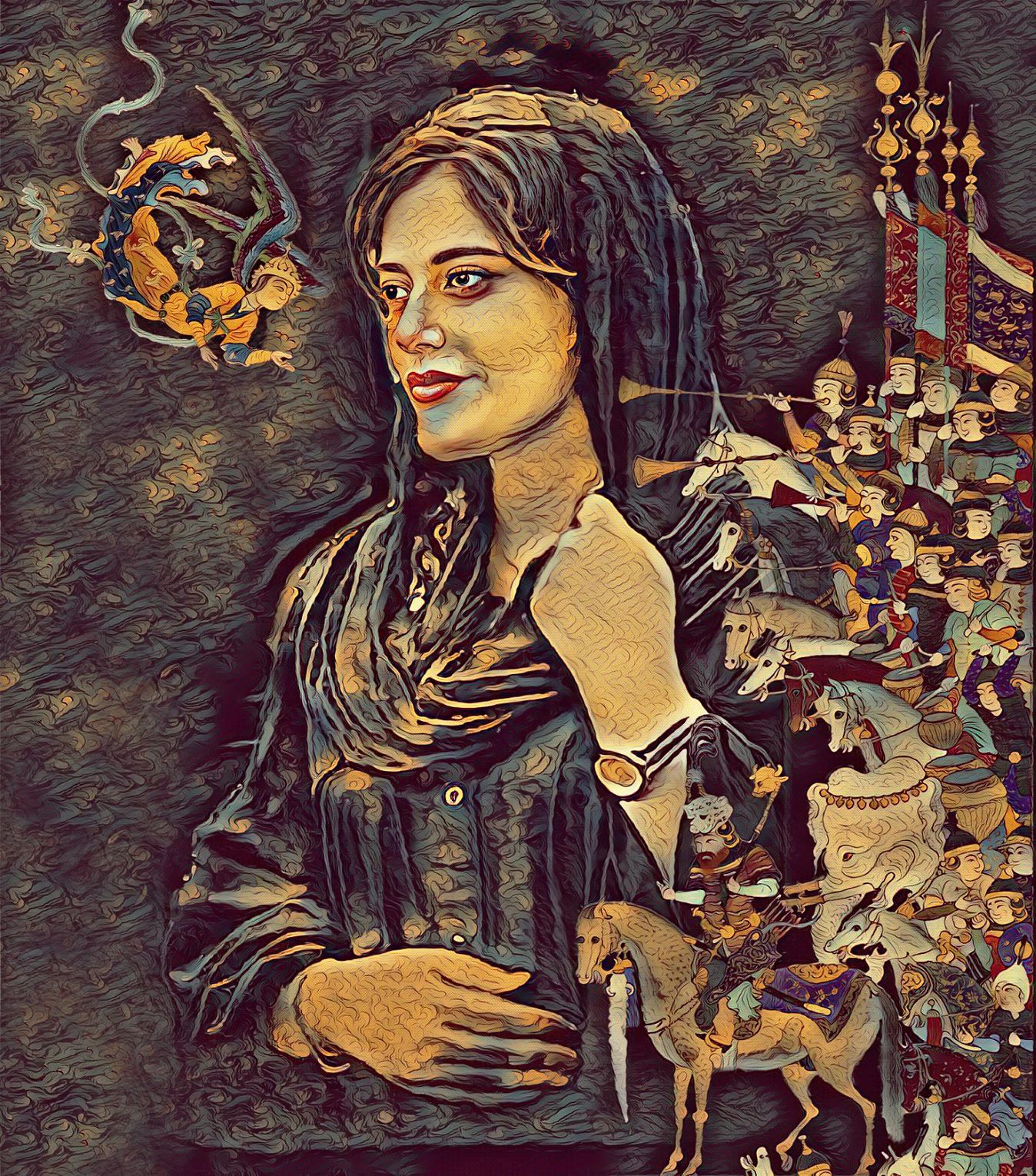In an enlightened solitude
I have wept with you
for the sake of the living
and in the dark cemetery I have sung with you
the most beautiful songs
for this year’s dead were
the greatest lovers, the most alive.
Content Warning: This collection contains descriptions of violence.
In September 2022, a 22-year-old Kurdish woman named Mahsa Jina Amini visited Tehran with her brother. She was arrested by Iran’s “Morality Police” (Gasht-e Ershad) for not wearing the compulsory hijab “properly.” According to witnesses and her family, Mahsa faced torture and ill-treatment inside the Gasht-e Ershad’s van. She lost consciousness while at Vozara detention center for an “educational” class, went into a coma, and was transferred to Kasra Hospital in Tehran. She died in custody three days later on September 16, 2022.
Mahsa Jina Amini’s death triggered months-long protests that began at her funeral in Saqqez, Kurdistan, and spread across all sections of Iranian society, reaching other marginalized regions, like Sistan-Baluchestan, in response to decades of inequality and widespread repression. Iranian authorities unlawfully killed hundreds of protestors, including children. Hundreds more were blinded by metal pellets, thousands sustained injuries, and tens of thousands were arbitrarily arrested. Additionally, following unfair and sham trials, Islamic Republic authorities executed at least eight men in relation to this uprising (Amnesty International, 2023).
The slogan “Woman, Life, Freedom” (Zan, Zendegi, Azadi in Persian), inspired by the Kurdish women’s movement slogan “Jin, Jiyan, Azadi,” was chanted first at Mahsa Jina Amini’s funeral in Aichi Cemetery in Saqqez while women removed their headscarves, embodying the idea of universal freedom through women’s freedom. The slogan began to echo in all corners of the country and was repeated around the world by Iranians in response to decades of the Iranian government’s oppression of women, repression of minorities, religious chauvinism, and government brutality against the dissidents. Despite the government's attempts to violently suppress protests, the movement persisted into 2023 and garnered support from the Iranian diaspora and global activists demanding accountability for the Iranian government’s crime (to learn more about the movement, you can visit this Woman, Life, Freedom Movement web-archive).
Many artists within and outside of Iran created digital art, posting their artworks on social media to stand in solidarity with the movement and amplify the voices of Iranian protestors. This collection archives and preserves some of the digital art that emerged from this movement, hinting at the government’s brutality in cracking down on peaceful protestors and showcasing the resilience and determination of Iranians in pursuit of equality, freedom, and meaningful change.
